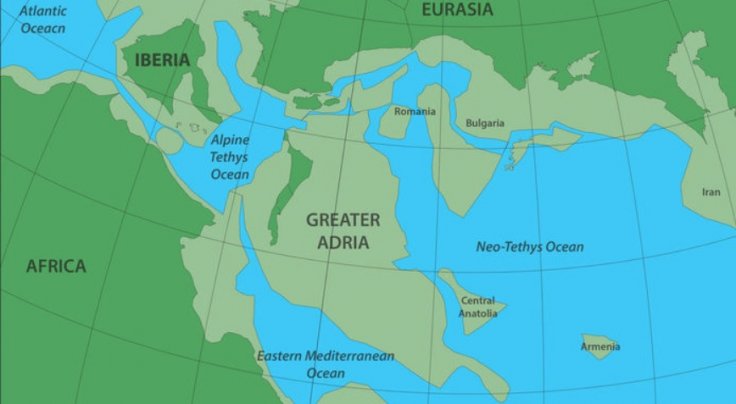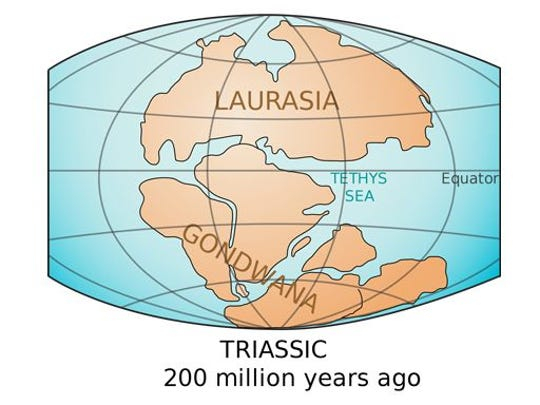
A new study conducted by a team of researchers has shed light into the history of Greater Adria, a vanished landmass that is lying beneath Europe. The research report revealed that the only visible remnants of this lost continent are limestones and other rocks found in Southern Europe.
Experts believe that these rocks and limestones started out as marine sediments, and in the course of time, these rocks were later scraped off the landmass's surface and lifted up due to collision of tectonic plates.
Douwe van Hinsbergen, a geologist at Utrecht University in the Netherlands reveals that Greater Adria had a very violent history. As per Hinsbergen, Greater Adria became a separate entity after it was broken away from the supercontinent of Gondwana. This happened almost 240 million years ago, and Greater Adria started moving northward.
Experts believe that Greater Adria was a Greenland-size landmass before 140 million years. The continent was apparently largely submerged in a tropical sea, where sediments got dumped and later turned into rock. Around 100 million years ago, it collided with what is now Europe, and got trapped beneath that continent.
After the collision, a fraction of Greater Adria's rocks remained on the earth's surface, and it helped scientists to know about this lost continent that was buried under a gigantic landmass 100 million years ago. Researchers also noted that this lost continent is now buried 1,500 kilometers under the earth's surface.
Interestingly, the remnants of Great Adria is dispersed across more than 30 countries, in a swath from Spain to Iran. Scientists believe that more studies should be carried out to collect more data about this lost continent.
"The Mediterranean region is quite simply a geological mess. Everything is curved, broken, and stacked," said Hinsbergen, Sciencemag reports.
Researchers also hope that learning more about the history of Greater Adria will help to know crucial details about continental collisions.
History is replete with lost continents including the legendary Atlantis that was submerged somewhere. In 2017, scientists have uncovered evidence of another ancient "lost continent" under the Indian Ocean island nation of Mauritius, named "Mauritia" that sank beneath the sea 84 million years ago.
Maurita continent was believed to be part of the gigantic supercontinent Gondwana that existed more than 200 million years ago and contained rocks as old as 3.6 billion years old, which later split into Antarctica, Africa, Australia and South America.
The study was based on a clue about a mineral on Mauritius that should not have been there, according to Prof. Lewis D. Ashwal, who led the team from the University of the Witwatersrand that found it.










